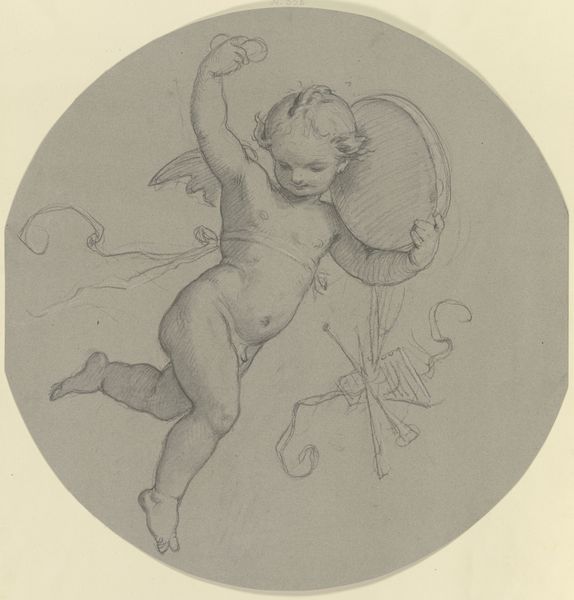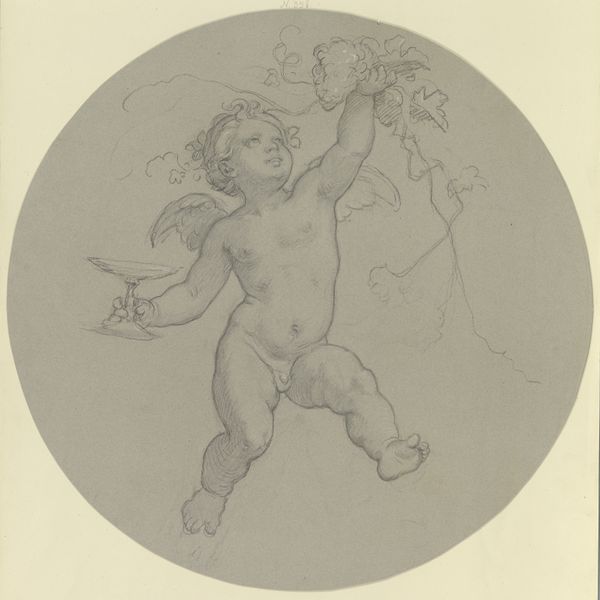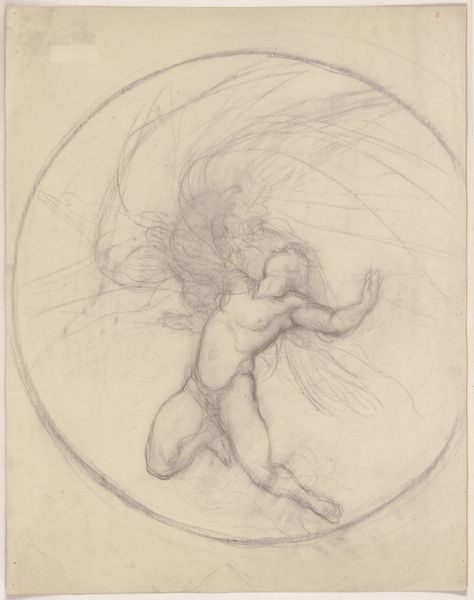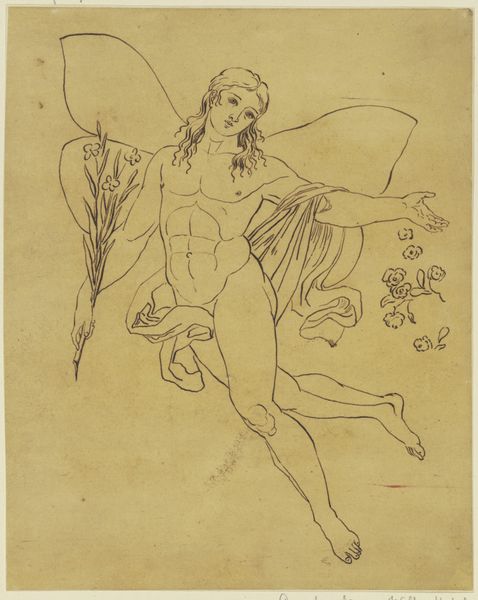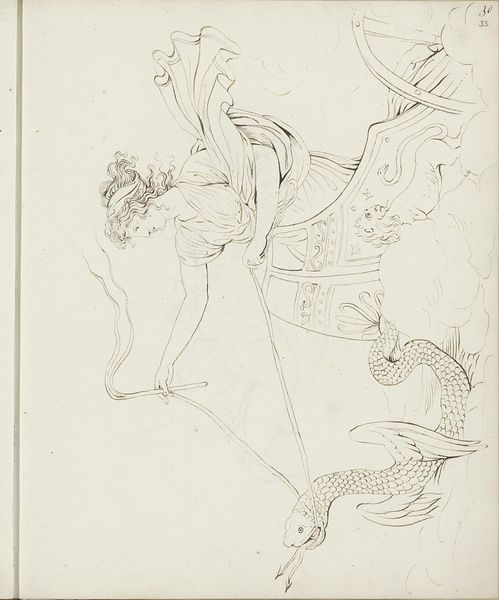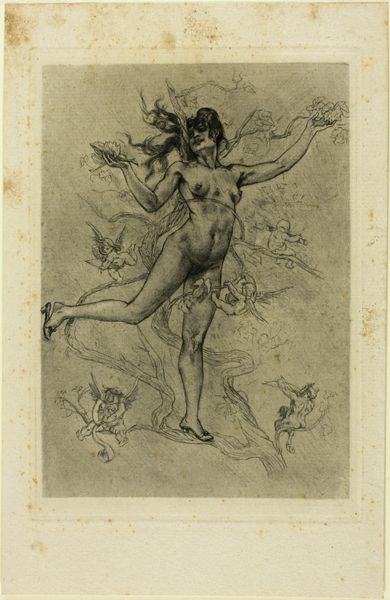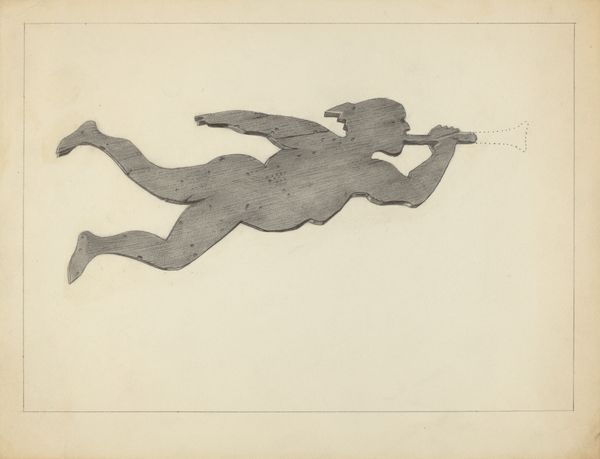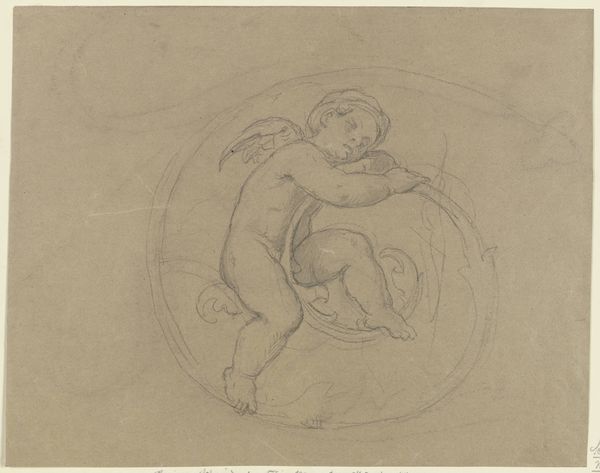
drawing, paper
#
drawing
#
16_19th-century
#
austrian
#
caricature
#
figuration
#
paper
#
romanticism
#
academic-art
Copyright: Public Domain
Curator: Welcome. Before us is “Schwebender Putto mit geschultertem Thyrsosstab,” a drawing executed around 1847 by the Austrian artist Moritz von Schwind. The artwork is currently held in the Städel Museum's collection. Editor: What immediately strikes me is the dynamism implied by such a simple sketch. There's almost an anti-gravity at work as if the laws of physics don't quite apply. The circular frame only reinforces this feeling of weightlessness and continual motion. Curator: Absolutely, there's a lighthearted freedom to it, achieved partly through its reference to the putto, or cherubic figure, that is found in classical and Renaissance art as embodiments of spiritual vitality and love. Moritz von Schwind's cherubs aren't always of this disposition, they take many forms, yet still refer to these same iconographic underpinnings. Editor: And what is that staff he’s carrying? It appears draped in ribbons and foliage. I'm intrigued by how it almost grounds him despite the overall ethereal impression. Curator: That is a Thyrsos, a staff associated with Dionysus, the Greek god of wine, ecstasy, and fertility. Here it’s adorned with vines, grapes, and ribbons to accentuate his revelrous association. We must remember that the symbol transcends its simple form, to function, on some level, as an assertion of the persistence and recurrence of symbols in culture. Editor: Interesting how this image can function as a signifier across multiple layers. I see a contrast in form as well between the round, soft shapes of the putto and the more rigid lines of the staff. The lines create a fascinating interplay. Curator: That push and pull is present, also, in the dichotomy of order and abandon often associated with Dionysian rites. Perhaps Schwind hints at something elemental about human nature here, this ongoing, recurring dance between restraint and freedom. Editor: Indeed, it's remarkable how such a quick drawing captures something so lasting and emotionally resonant, even to a modern viewer. Curator: Agreed. And with that, we’ve explored a bit about Moritz von Schwind’s cherub; hopefully we have unveiled the threads connecting symbol and psyche in visual experience.
Comments
No comments
Be the first to comment and join the conversation on the ultimate creative platform.
